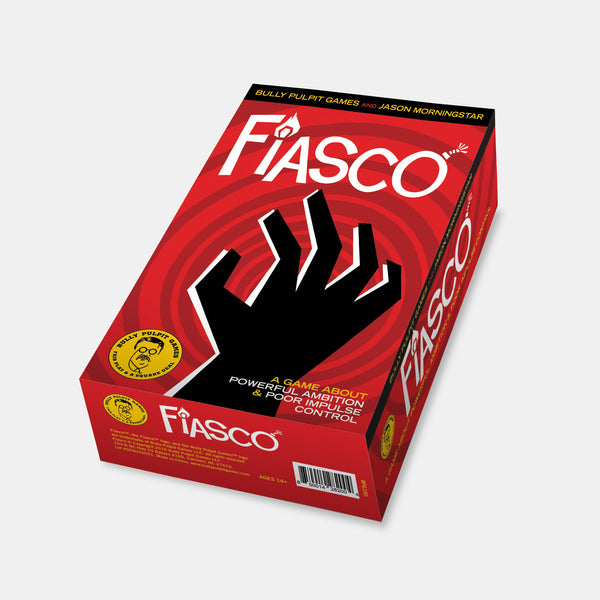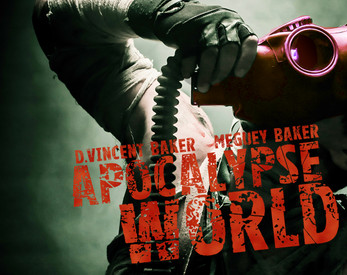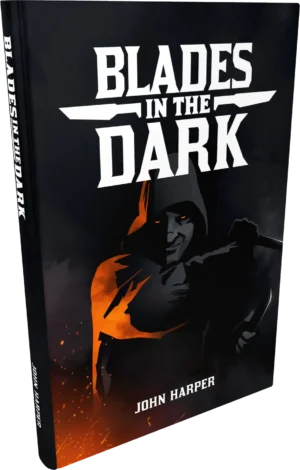Fiasco Modern; Dark; Psychological; Narrative-Driven; GM-less / Cooperative; Social Intrigue; Quick-Play / One-Shot
Fiasco is a GM-less, narrative-driven tabletop roleplaying game designed for 3-5 players, emphasizing collaborative storytelling and dark, comedic outcomes. Inspired by films like Fargo and Blood Simple, Fiasco focuses on ordinary people with grand ambitions and poor impulse control, leading to disastrous situations. This report examines Fiasco's theme and setting, core mechanics, unique attributes, and target audience to understand its appeal as a quick-play, one-shot experience centered on social intrigue and psychological tension.
Theme and Setting
Fiasco distinguishes itself through its focus on cinematic tales of small-time capers gone wrong. The core theme revolves around the intersection of greed, fear, and lust, driving ordinary individuals to make disastrous decisions. The game encourages players to embrace the moment when something awful is about to happen.
Instead of a fixed setting, Fiasco utilizes 'playsets' that define the specific environment for each game. These playsets range from small-town America (Main Street) and the Wild West (Boomtown) to more unusual locales like an Antarctic research station (The Ice). A variety of expansion packs provides more playsets, such as Teen Angst, Unknown Monsters and Fiasco USA. Players also have access to numerous fan-made playsets. The playsets provide the relationships, needs, locations and objects that create the setting of each unique story.
Core Mechanics and Rules
Fiasco operates without a Game Master (GM), fostering a cooperative storytelling environment. Gameplay is structured around several phases:
- Setup: Players roll dice and use the results to establish relationships, needs, objects, and locations between their characters using elements defined by the chosen playset. Relationships are mandatory, whereas the other aspects are optional.
- Act One: Players take turns either establishing or resolving scenes. When establishing, the player sets the scene's context, but other players determine the outcome (good or bad). When resolving, other players define the scene, while the acting player determines the outcome. Dice are awarded based on the scene resolution.
- The Tilt: This pivotal event introduces a major complication or disaster, significantly altering the narrative's course. The Tilt is determined by dice rolls and a table of catastrophic elements. The player with the highest light dice and the player with the highest dark dice each roll unassigned dice and select one group on the tilt table. They then use the remaining dice to pick a specific tilt element from the other's chosen group.
- Act Two: Similar to Act One, but with the added element of the Tilt influencing scenes.
- The Aftermath: Players roll their accumulated dice to determine the ultimate fate of their characters, consulting the Aftermath table to determine the results. Players then narrate a final scene. The montage concludes the story.
The game has two main versions: a classic version using six-sided dice and index cards, and a card-based edition. The card-based edition replaces dice with playing cards, streamlining setup and gameplay. The card-based edition is designed to be faster, clocking in around 2 hours.
What Makes Fiasco Unique
Several factors contribute to Fiasco's distinct identity in the tabletop gaming landscape:
- GM-less Gameplay: Removing the GM role encourages equal participation and shared ownership of the narrative.
- Collaborative Storytelling: Players collectively craft the story, improvising and reacting to each other's contributions.
- Focus on Disaster: Fiasco embraces the concept of plans going awry, leading to comedic and often tragic outcomes.
- Playset System: The flexible playset system allows for diverse settings and themes, enhancing replayability.
- Quick Play: Fiasco is designed for one-shot sessions, making it accessible for players with limited time.
- Minimal Preparation: The game requires little to no advance preparation, enabling spontaneous gameplay.
Target Audience and Player Experience
Fiasco appeals to players who enjoy narrative-driven experiences, social interaction, and improvisational storytelling. It is well-suited for those seeking a break from traditional RPGs with complex rules and lengthy campaigns. Fiasco's emphasis on dark comedy and disastrous situations may particularly resonate with fans of Coen brothers films and similar works. Players who enjoy acting and writing tend to enjoy the improvisational aspects of the game.
The game may not suit all players. Some players may find the free-form nature and lack of structured mechanics overwhelming. However, the experience of creating a collaborative, chaotic story often results in memorable and hilarious moments. The game allows players a chance to actively reach for the moments they dread in most games. Praise for the game highlights its ingenuity and potential for creating uniquely engaging experiences.



